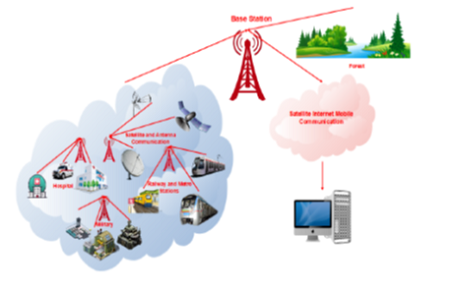


Indian Journal of Science and Technology
Year: 2021, Volume: 14, Issue: 22, Pages: 1813-1828
Original Article
G S Pavithra 1,*, N V Babu 2
Received Date:25 April 2021, Accepted Date:19 May 2021, Published Date:20 June 2021
Objectives: To efficiently monitor the highly confined area by using security measurement methods to enhance the lifetime of a large area coverage network. Methods : the modified nodes are included in the normal execution process of the network to calculate the efficiency and lifetime of the WSN. With the help of the simulation and analysis process, the proposed protocol is found to be more powerful to impact the sustainability of the network by prolonging the lifetime of the nodes. To perform this operation, the following parameters are considered: Area of the monitoring area, Number nodes, Sink portion, Energies of radio amplifier systems, Data aggregation, node electronics, and data packet length. Findings: The proposed optimal energy cluster routing protocol finds the best topological structural protocol to select the cluster head with optimal connectivity path with other nodes in a group. The data of energy utilization, data communication rate between nodes and cluster head, and analysis of the number of alive nodes concerning time are obtained. Novelty: the proposed Optimal efficient cluster routing protocol (OECRP) selects the cluster head by considering energy consumption, cluster sustainability, and its proper communication with other nodes. OECRP is used to develop the optimal topological structural protocol to connectivity path with other nodes in a group.
Keywords
Heterogeneous network, Lowenergy adaptive clustering hierarchy (LEACH), optimal efficient cluster routing protocol (OECRP), Network lifetime, Cluster head selection
© 2021 Pavithra & Babu. This is an open-access article distributed under the terms of the Creative Commons Attribution License, which permits unrestricted use, distribution, and reproduction in any medium, provided the original author and source are credited. Published By Indian Society for Education and Environment (iSee)
Subscribe now for latest articles and news.